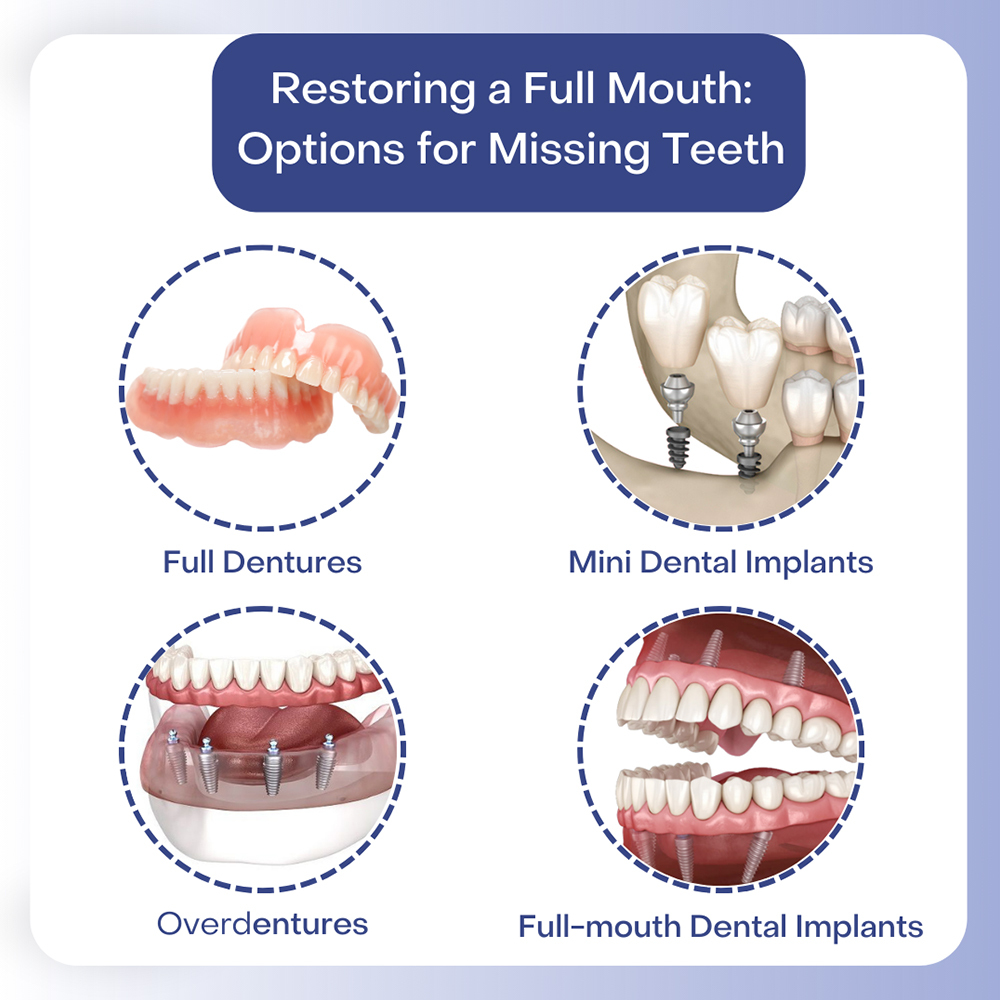The 15-Second Trick For Dental Sense
The 15-Second Trick For Dental Sense
Blog Article
Dental Sense Things To Know Before You Get This
Table of ContentsSome Ideas on Dental Sense You Should Know9 Simple Techniques For Dental SenseDental Sense - The FactsFacts About Dental Sense Revealed
are medical devices surgically implanted into the jaw to restore an individual's capacity to eat or their appearance. They provide assistance for fabricated (fake) teeth, such as crowns, bridges, or dentures. When a tooth is lost due to injury or illness, an individual can experience issues such as fast bone loss, defective speech, or changes to eating patterns that result in discomfort.Oral dental implant systems include an oral implant body and oral implant abutment and might additionally consist of a joint addiction screw. Dental implant vs bridge. The dental implant body is surgically placed in the jawbone in area of the tooth's origin. The dental implant joint is typically attached to the implant body by the joint addiction screw and expands with gums into the mouth to sustain the affixed synthetic teeth
(https://hubpages.com/@dentalsense1)Structure of The Oral Implant System picking oral implants, speak to your dental company concerning the prospective advantages and risks, and whether you are a candidate for the procedure. Things to take into consideration: Your overall health is a vital consider figuring out whether you are a good prospect for dental implants, for how long it will take to recover, and for how long the dental implant might stay in place.
Cigarette smoking might impact the healing procedure and lower the lasting success of the implant. The healing procedure for the implant body may take several months or longer, throughout which time you normally have a momentary abutment in area of the tooth. the oral implant treatment: Very carefully comply with the oral hygiene guidelines provided to you by your dental service provider.
What Does Dental Sense Do?
Implant failing can cause the requirement for an additional operation to deal with or replace the implant system. Brings back the ability to eat Restores aesthetic appearance Aids maintain the jawbone from shrinking due to bone loss Protects the health and wellness of the surrounding bone and periodontals Aids keep surrounding (close-by) teeth steady Improves lifestyle Damage to bordering natural teeth during implant placement Injury to the surrounding cells during surgical procedure, such as sinus perforation Injury throughout surgery (for instance, crack of surrounding jawbone) Insufficient function, such as seeming like the teeth do not attack with each other normally A feeling that the tooth is loose or twisting in place resulting from an abutment screw loosening up Implant body failing (looseness of the implant body) as a result of systemic infection, which might be most likely in individuals with unrestrained diabetics issues due to local infection in bone and gum tissues sustaining the dental implant body because of postponed healing, which might be most likely in people who smoke Trouble cleaning up the gum tissues around the implant, resulting in bad dental hygiene Without treatment gum illness Post-surgical tingling due to nerve impingement or damages Always alert health treatment carriers and imaging professionals that you have oral implants prior to any kind of magnetic vibration imaging (MRI) or x-ray procedures.
FDA is not knowledgeable about any type of damaging events reported for MRI or x-ray procedures with oral implants. Oral implants systems are commonly made from materials that adhere to worldwide agreement criteria of the International Company for Standardization (ISO) or ASTM International. These standards have information of what makes a safe product.

An oral implant is a structure that changes a missing out on tooth. With screw-like tools, the surgeon inserts an implant into the jawbone, and it works as an anchor for a man-made tooth, called a crown. A device called an abutment links the man-made tooth to the oral implant. The crown is customized to fit the person's mouth and match the shade of their teeth.
Everything about Dental Sense
Some people are not qualified for oral implant surgical procedure. It is for oral cosmetic surgeons to operate people with: intense illnessuncontrollable metabolic diseasebone or soft tissue condition or infectionIf these issues are settled, an individual can have the surgical procedure. In, dental cosmetic surgeons avoid operating individuals with: If individuals with any of the above go through dental implant surgery, there is a higher threat of the dental implant stopping working.

Oral dental implant surgery is a personalized procedure. It's not the very same for everyone. But the adhering to provides a basic introduction of what you can expect your dental expert, oral cosmetic surgeon, periodontist you could try these out or prosthodontist to do: Put the dental implant surgically. Give you time to recover. Attach the post and last crown, bridge or denture.
Next off, your doctor will meticulously place the dental implant into your jaw. If your dental implant is near the front of your mouth, your dental expert will certainly make a short-lived tooth for you to use until you heal.
Little Known Facts About Dental Sense.
Your provider can tell you what to expect in your situation. Throughout the healing stage, your jawbone ought to fuse to the dental implant. This process, called osseointegration, is essential for security and lasting success. This procedure can take anywhere from three to nine months. In some instances, it may take longer.
As soon as your dental implant heals, your dental expert can affix the abutment (little connector post) and your last remediation (crown, bridge or denture). This generally takes about one hour to finish and may need a second small surgical procedure. You shouldn't really feel any pain throughout your dental implant treatment due to the fact that your copyright will utilize medication to numb your gums.
Report this page